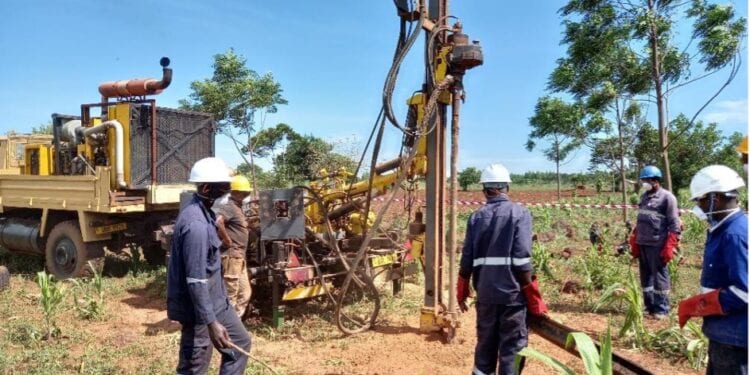First Five Holes Intersect Clay Intervals In Uganda
Ionic Rare Earths Limited (ASX: IXR) Phase 3 exploration drill programme at its 51% owned Makuutu Rare Earths Project in Uganda has confirmed the presence of the sedimentary basin in Exploration Licence 00147.
The first five drill holes of the initial reconnaissance drill programme have all intersected clay intervals with two holes (RRMRB004 and 005) both intersecting sediments confirming the presence of the sedimentary basin that hosts the Makuutu REE mineralisation in this area.
These are the first drill holes to test the highly prospective Exploration Licence 00147 with the current resource boundary located approximately 5 kilometres west of these new drill holes.
Makuutu ranks amongst the world’s largest ionic adsorption clay (IAC) deposits, and as such, a globally strategic resource for low-cost, high-margin and long-term security of critical and heavy rare earth (HREO) supply.
The Phase 3 drill programme is a 1200 metre (67 hole) reconnaissance Rotary Air Blast (RAB) drill program aimed to test new targets plus test for rare earth element (REE) mineralisation in areas outside the previous focus of the Project. Some targets are potential alternate host types that have not been previously tested.
The current programme is a follow on to the company’s threefold increase of the Mineral Resource Estimate (MRE) at Makuutu, announced un March 2021, which has been estimated at 315 Million tonnes at 650 ppm Total Rare Earth Oxide (TREO) with a cut-off grade of 200 parts per million (ppm) TREO minus Cerium Oxide (CeO2).
“The initial drilling activity within the new exploration licence EL00147 has found sediments that appear similar to those that host the Makuutu rare earth mineralisation,” Managing Director, Tim Harrison, said.
“The drilling is initially focused on establishing the existence of the sediments and rare earth hosting clay on the eastern side of the massive radiometric anomaly that extends from the Makuutu deposit. The exploration targeting method to date has been very successful and continues to provide a great initial indicator for the regolith profile seen at Makuutu with all holes intersecting clay beneath a surface hardcap layer.”
A total of four reconnaissance RAB holes have been completed with 1 hole in progress. Significantly, holes RRMRB004 and RRMRB005 finished in sediments considered to be of similar appearance to those seen at the Makuutu deposit, confirming the interpretation that the sedimentary basin hosting the REE mineralisation at the Makuutu also occurs in this area. All holes have intersected clay and saprolite regolith profiles.
The 37 kilometre long sedimentary basin that hosts the Makuutu REE mineralisation has been interpreted from aeromagnetic and gravity data. Drilling to date has focused exclusively on eU/eTh radiometric anomalies interpreted to be derived from the laterite hardcap within the basin. There has not been any testing of radiometric anomalies outside the sedimentary basin or from zones within the basin.
An initial RAB program of 25 holes is planned for EL00147 to traverse the main radiometric (eU/eTh) targets. The aim of this drilling is to test for REE occurrence and tenor, the regolith profile and underlying fresh rock type.”












